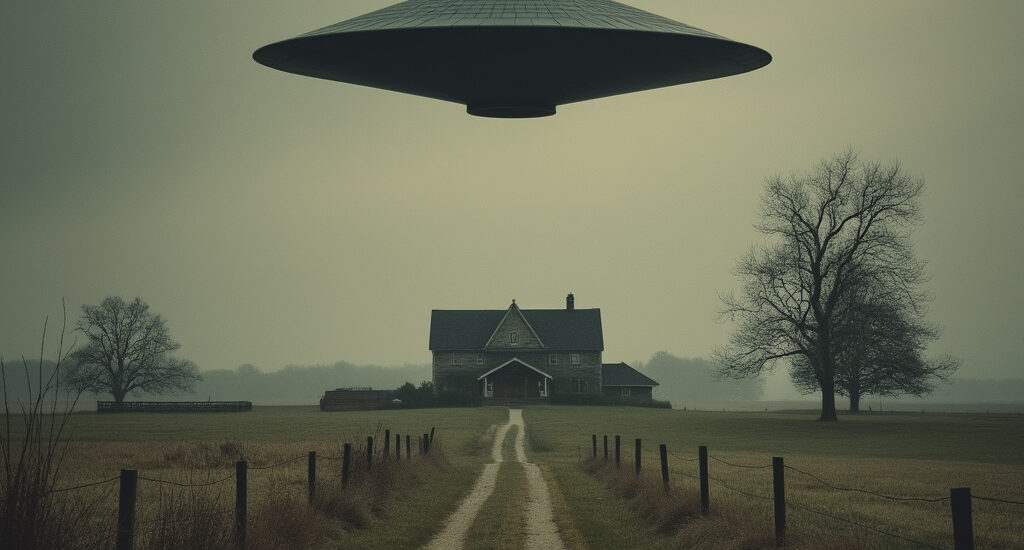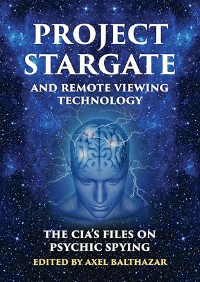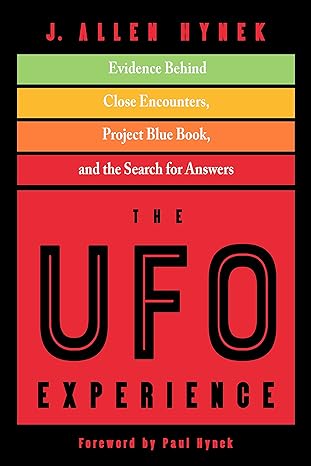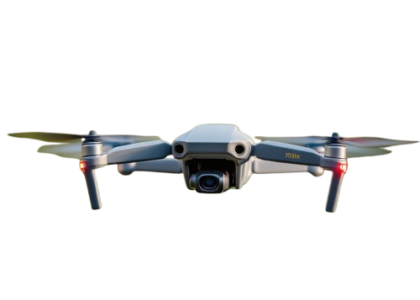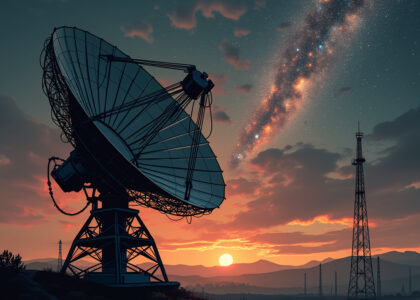As you research into the fascinating world of unidentified aerial phenomena, you may wonder why the term “UFO” has given way to “UAP.” The answer lies in the evolving understanding of these enigmatic objects, which have captivated human imagination for decades. With recent congressional hearings and NASA’s independent study shedding light on the phenomenon, it’s vital to grasp the nuances of UAPs and why they’re now the preferred term. In this article, we’ll explore the reasons behind the shift, what UAPs are, and what experts say about these mystifying sightings.
Key Takeaways:
- UAP Definition: UAP stands for “unidentified anomalous phenomena,” a term used to describe objects detected in the air, sea, and space that defy easy explanation.
- Government Investigation: The Pentagon has established an office, known as the All-domain Anomaly Resolution Office (AARO), to investigate UAP incidents, and NASA has convened a group of experts to review data collection and issue recommendations.
- UAP Characteristics: The most noteworthy incidents feature spherical or oval-shaped objects traveling at high speeds with no apparent means of propulsion, and pilots report that the objects appear smooth, with no seams or rivets found on conventional aircraft.
- Name Change: The term “UFO” (unidentified flying object) has been replaced by “UAP” to avoid associations with conspiratorial and paranoid thinking, and to encourage pilots to come forward with their experiences without fear of repercussions.
- Expert Findings: While experts have found no evidence that UAPs are extraterrestrial, a small subset of reported encounters still defy explanation, and researchers are working to collect improved data to gain a better understanding of what UAPs may be.
What are UAPs?
While the term “Unidentified Aerial Phenomena” (UAP) may seem mysterious, it’s imperative to understand what it encompasses. [The US government has officially adopted the term UAP to describe these enigmatic objects.]
Definition and Terminology
Any object detected in the air, sea, or space that defies easy explanation can be classified as a UAP. The term was previously known as “Unidentified Aerial Phenomena” until December 2022, when the Pentagon updated its terminology to include “submerged and trans-medium objects.” NASA and other agencies soon followed suit, adopting the new definition.
By definition, UAPs are unidentified, but generally, the term refers to objects spotted by pilots or detected by sensors that cannot be immediately explained. Hundreds of military and commercial pilots have reported UAP encounters, with many ending up having innocent explanations, such as weather balloons or drones, while others remain shrouded in mystery.
Characteristics of UAPs
Definition of UAPs often involves reports of spherical or oval-shaped objects traveling at high speeds with no apparent means of propulsion. Pilots describe these objects as smooth, with no seams or rivets found on conventional aircraft. Many report that they fly in ways that seemingly defy physics.
The exact nature of UAPs varies, but the most noteworthy incidents typically feature objects with extraordinary capabilities, such as rapid acceleration and deceleration, or the ability to hover in mid-air. These characteristics have sparked widespread interest and debate about the origins and nature of these enigmatic objects.
UAPs have been reported to exhibit behaviors that challenge our current understanding of aerodynamics and physics. For instance, they can change direction rapidly, accelerate at incredible speeds, and even seemingly disappear into thin air. These extraordinary abilities have led many to speculate about the possibility of advanced technology or even extraterrestrial origin, although there is currently no conclusive evidence to support these claims.
History of UAP Sightings
The history of UAP sightings dates back to the 1940s, when private pilot Kenneth Arnold reported seeing flying objects in the sky. This incident sparked widespread media coverage and kicked off a craze about flying discs and saucers, with hundreds of reports emerging soon after. [The US government has been collecting data on UAPs for decades, but it wasn’t until recently that they officially acknowledged the phenomenon.]
The term “UFO” was coined by the Air Force in 1952, and it became a cultural phenomenon over the ensuing decades, with depictions of alien creatures and spacecraft visiting Earth emerging as a staple of science fiction books, movies, and TV shows.
To better understand the history of UAP sightings, it’s imperative to acknowledge the stigma associated with the term “UFO,” which discouraged many pilots from coming forward with their experiences, fearing a negative impact on their careers or reputations. The recent shift to the term “UAP” aims to remove this stigma and encourage more people to share their encounters. [The US government’s official recognition of UAPs marks a significant shift in the way we approach these phenomena.]
The Government’s Response
One of the most significant developments in the study of UAPs has been the government’s response to the phenomenon. In recent years, there has been a marked shift towards greater transparency and acknowledgment of the existence of UAPs.
Congressional Hearing and Whistleblower Testimony
For the first time, members of Congress heard stunning testimony from a former intelligence officer-turned-whistleblower and two pilots about their experiences with strange, seemingly inexplicable objects that hundreds of pilots have reported encountering in recent years. The hearing, held by a House subcommittee, focused on so-called UAP, the formal government name for objects that had previously been known as UFOs. The witnesses shined a light on an issue that has attracted renewed interest over the past several years, but many Americans are turning their attention to the phenomena for the first time.
You may be wondering what kind of testimony was shared during this hearing. David Grusch, the ex-intelligence officer, told lawmakers about a “multi-decade UAP crash retrieval and reverse-engineering program” by the government while he was working at a Pentagon office dedicated to investigating the encounters. The two other witnesses, David Fravor and Ryan Graves, told lawmakers about their firsthand experience with the mysterious objects while piloting military aircraft.
NASA’s Independent Study on UAPs
Hearing about the lack of progress in understanding UAPs, NASA convened a group of 16 experts to review how data about UAPs is collected across the government and private sector, and issue recommendations for how the space agency can contribute to investigations into their origins. [NASA’s study found no evidence that UAPs are “extraterrestrial,” but said a small subset of reported encounters still defy explanation.]
Due to the complexity of the issue, NASA’s study team did not find any evidence that UAP have an extraterrestrial origin. But, as NASA Administrator Bill Nelson said, “we don’t know what these UAP are.” The study team emphasized the need for higher-quality data to get a better understanding of UAPs.
The Pentagon’s UAP Task Force and AARO
Forcefully addressing the issue, the Pentagon established the Navy-led “UAP Task Force” to investigate reports, which later evolved into the All-domain Anomaly Resolution Office (AARO). [The Pentagon has released several videos in recent years showing some of the objects.]
Independent of NASA’s study, the Pentagon’s AARO has collected more than 800 UAP reports, and between 2% and 5% of those incidents end up being “truly anomalous.” AARO’s leader, Sean Kirkpatrick, has said that his office has found no credible evidence thus far of extraterrestrial activity, off-world technology, or objects that defy the known laws of physics.
Pilot Encounters
Unlike other professions, pilots are trained to observe and report unusual aerial phenomena. Their encounters with UAPs have been instrumental in shedding light on this enigmatic topic.
David Fravor’s “Tic Tac” Incident
Any pilot who has had a close encounter with a UAP will tell you that it’s an experience unlike any other. David Fravor, a former Navy pilot, is one such individual. In 2004, while on a training mission off the coast of San Diego, Fravor and his wingman were ordered to investigate an unknown object detected by Navy sensors. What they saw was a small, white, Tic Tac-shaped object hovering above the water, with no wings or indication of how it was moving. As they descended to get a better look, the object rapidly accelerated and disappeared right in front of their aircraft. [The incident has been dubbed the “Tic Tac” incident due to the object’s resemblance to the popular breath mint.] Fravor’s testimony before Congress was a testament to the professionalism and credibility of pilots who have come forward with their UAP encounters. His experience highlights the need for a more systematic approach to collecting data on UAPs, which is imperative for understanding their nature and origins.
Ryan Graves’ Experience with UAPs
Encounters with UAPs are not rare or isolated incidents, as Ryan Graves, another former Navy pilot, can attest. Graves has spoken publicly about his experiences with UAPs, which he believes are not of this world. He has emphasized the importance of transparency and accountability in reporting UAP sightings, highlighting the need for a cultural shift within the military and aviation communities. Graves’ testimony before Congress was a powerful reminder that UAPs are a serious issue that deserves our attention and scrutiny. His experiences, along with those of other pilots, have helped to shed light on the mysterious nature of UAPs and the need for further investigation. [Graves’ testimony has been instrumental in pushing for greater transparency and accountability in reporting UAP sightings.] Also, Graves’ experiences have shown that UAPs can be a threat to national security, as they can interfere with military operations and pose a risk to aircraft and personnel. This underscores the need for a more coordinated approach to investigating UAPs, one that involves multiple government agencies and private sector organizations.
The Stigma of Reporting UAP Sightings
Ryan Graves has spoken candidly about the stigma attached to reporting UAP sightings, which can be a major obstacle to gathering more information about these phenomena. Pilots who come forward with their experiences risk being ridiculed or ostracized, which can have serious consequences for their careers and reputations. Even today, the stigma surrounding UAP sightings remains a significant challenge to overcome. It’s imperative that we create a culture where pilots and other witnesses feel comfortable coming forward with their experiences, without fear of reprisal or ridicule. By doing so, we can gather more data and insights into the nature of UAPs, which is critical to advancing our understanding of these enigmatic phenomena.
Investigating UAPs
Now that we’ve explored into the world of UAPs, it’s imperative to explore how these phenomena are being investigated.
The Challenge of Collecting Data
Collecting reliable data on UAPs is a significant hurdle in understanding these phenomena. [The lack of standardization in reporting and collecting data hinders the progress of UAP research.] As you might expect, gathering information on unidentified aerial phenomena is a complex task, especially when it comes to distinguishing between genuine sightings and misidentifications. Furthermore, the stigma associated with UAP sightings can discourage witnesses from coming forward, making it even more challenging to collect accurate data.
The Role of AARO and NASA
Along with the Pentagon, NASA has taken significant steps to investigate UAPs. [NASA’s independent study team has been instrumental in examining the government’s data-collection efforts.] The All-domain Anomaly Resolution Office (AARO), led by Sean Kirkpatrick, has collected over 800 UAP reports, with only a small percentage displaying signatures that could be described as “anomalous.” AARO’s work is crucial in shedding light on the nature of UAPs, and its findings will be imperative in guiding future research. For instance, AARO’s report will provide valuable insights into the characteristics of UAPs, which will help researchers design more effective methods for collecting data. Additionally, NASA’s independent study team has emphasized the need for higher-quality data to better understand UAPs.
The Need for Higher-Quality Data
Needless to say, collecting high-quality data is imperative for making progress in UAP research. [The lack of sufficient data hinders the ability to reach defendable conclusions about UAPs.] As NASA Administrator Bill Nelson noted, “The top takeaway from the study is that there is a lot more to learn.” To achieve this, researchers must develop more sophisticated methods for collecting and analyzing data on UAPs. A crucial aspect of this effort is the development of standardized reporting protocols, which will enable researchers to compare and contrast data from different sources. By doing so, scientists can identify patterns and anomalies that may hold the key to understanding these enigmatic phenomena.
Debunking Myths
For a long time, the term “UFO” has been associated with extraterrestrial life and conspiracy theories, which has led to a lot of misconceptions about Unidentified Aerial Phenomena (UAPs). It’s vital to separate fact from fiction and debunk some of the myths surrounding UAPs.
The Lack of Evidence for Extraterrestrial Origin
Before we look into the world of UAPs, it’s crucial to acknowledge that there is no concrete evidence to support the idea that these phenomena are of extraterrestrial origin. [The NASA study group found no evidence that UAPs have an extraterrestrial origin.] In fact, experts have been clear that most UAP reports can be explained by natural phenomena or human error. The remaining unexplained cases are still a mystery, but they don’t necessarily point to alien life. While the idea of extraterrestrial life is fascinating, it’s vital to approach this topic with a scientific mindset and rely on empirical evidence. So far, there is no credible evidence to support the notion that UAPs are of extraterrestrial origin.
The Misconceptions Surrounding UAPs
Debunking misconceptions about UAPs is crucial to understanding this phenomenon. One common misconception is that UAPs are always mysterious and unexplainable. [The military has said that most UAP reports turn out to have innocuous explanations.] In reality, many reported UAP incidents can be explained by natural phenomena, human error, or man-made objects. Another misconception is that the term “UAP” is just a rebranding of “UFO” to avoid the stigma associated with the latter. While it’s true that the term “UFO” has been associated with conspiracy theories and science fiction, the shift to “UAP” is more about accurately describing the phenomenon. (This site still likes the old “UFO” moniker – and even “USO”, for that matter – and will continue to use them at will) UAPs are not necessarily flying objects, and the term “unidentified aerial phenomena” encompasses a broader range of unexplained sightings. At the heart of the misconceptions surrounding UAPs is a lack of understanding about what these phenomena are and how they are investigated. By shedding light on the facts and debunking myths, we can foster a more informed discussion about UAPs. In addition to these misconceptions, there is a common perception that UAP sightings are rare or isolated incidents. However, as pilots like Ryan Graves have testified, these incidents are not rare, and hundreds of military and commercial pilots have reported UAP encounters. [Graves said the incidents were “not rare or isolated,” and that “the American people deserve to know what is happening in our skies.”] By acknowledging the frequency of these sightings, we can work towards a better understanding of UAPs and their significance.
The Future of UAP Research
Not surprisingly, the future of UAP research holds much promise, with various initiatives underway to improve our understanding of these enigmatic phenomena.
Improving Data Collection and Analysis
At the heart of any scientific inquiry lies the collection and analysis of data. To better understand UAPs, researchers must develop more sophisticated methods for gathering and interpreting data. This involves investing in advanced sensors and cameras, as well as refining algorithms to sift through the vast amounts of data generated by these systems. By doing so, you will be able to identify patterns and anomalies that may shed light on the nature of UAPs. Furthermore, researchers are exploring new approaches to data analysis, such as machine learning and artificial intelligence, to help identify potential UAP sightings and distinguish them from natural phenomena or man-made objects. These advances will enable scientists to separate the signal from the noise, providing a clearer picture of what UAPs are and how they behave.
Collaboration between Government and Private Sector
With the establishment of the All-domain Anomaly Resolution Office (AARO) and NASA’s Unidentified Anomalous Phenomena Independent Study, the government has taken significant steps towards investigating UAPs. However, collaboration between government agencies and private sector organizations will be crucial in accelerating progress. Government agencies, such as the Pentagon and NASA, possess resources and expertise that can be leveraged to advance UAP research. Meanwhile, private companies and organizations can bring innovative approaches and technologies to the table. By working together, these entities can pool their resources, share knowledge, and coordinate efforts to achieve a deeper understanding of UAPs. For instance, NASA’s study group has emphasized the need for public-private partnerships to improve data collection and analysis. By fostering collaboration between government agencies, private companies, and academic institutions, researchers can tap into a broader range of expertise and resources, ultimately driving progress in UAP research.
The Potential for Breakthroughs
Collection of high-quality data and collaboration between government and private sector organizations will be important in unlocking the secrets of UAPs. As researchers continue to gather and analyze data, they may stumble upon breakthroughs that challenge our current understanding of physics and aerodynamics [the Pentagon has announced plans to release a report on UAP sightings later this year, which may shed new light on the phenomenon]. Consequently, the potential for breakthroughs in UAP research is vast. Imagine, for instance, discovering a new form of propulsion or a previously unknown material that could revolutionize transportation or energy production. Alternatively, UAP research could lead to a deeper understanding of the fundamental laws of physics, enabling scientists to develop new technologies that transform our daily lives [the NASA study group has recommended establishing a permanent office to oversee UAP research, which could pave the way for future breakthroughs].
Final Words
From above, you’ve gazed upon the enigmatic world of Unidentified Aerial Phenomena (UAPs). What was once shrouded in mystery and misconceptions is slowly unraveling, thanks to the courageous testimonies of pilots and whistleblowers, as well as the concerted efforts of government agencies and experts. As you’ve learned, UAPs are not simply “flying saucers” or extraterrestrial visitors; they represent a complex, multifaceted phenomenon that continues to intrigue and mystify us.
As you ponder the implications of UAPs, remember that the pursuit of understanding is a collective endeavor. It requires an open mind, a willingness to question, and a commitment to scientific rigor. By shedding light on the unknown, we may uncover new truths that challenge our current understanding of the world and our place within it. The journey to comprehend UAPs has just begun, and you, dear reader, are now part of this fascinating narrative. The skies, it seems, still hold many secrets – and it’s up to us to uncover them.


